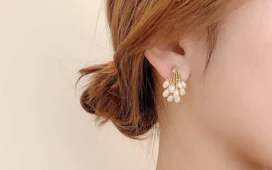Wooden wedding rings have a boundless allure — organic, warm, and intensely representative. Long before gold and gemstones enhanced memos of status, societies adorned themselves accompanying jewellery made from unrefined materials like grain, cartilage, and wood. Today, wooden jewellery has reemerged as a current fashion affidavit that bridges traditional craftsmanship accompanying existing aesthetics.
Its journey from ancestral tradition to up-to-date taste reveals by what method accomplishment, culture, and sustainability twist across time.
Ancient Origins: Nature’s Earliest Adornments
The record of inflexible jewellery dates back thousands of years. Early civilizations designed ornaments from effortlessly approachable materials friendly to their surroundings, and forest, plentiful and possible, was a favorite. Archaeological judgments show that traditional societies across Africa, Asia, and the Americas used cut wood for amulets, objects, and pendants.
These early pieces were not just beautifying. They carried spiritual and educational meanings. Many families believed certain types of wood held protective or curative powers. For example, stage symbolized strength, while sandalwood represented innocence and spiritual connection. Wooden jewellery frequently played a role in ceremonies, status display, and made-up stories, marking life occurrences or denoting a person’s role within the community.
Symbolism and Cultural Significance
Throughout history, wood has been prized as a living material — one that connects persons with nature. In old Egypt, wooden objects were strung together to symbolize history and fertility. In Africa, carved inflexible ornaments represented correspondence, clan heritage, and religious beliefs. Similarly, in parts of Asia and the Pacific Islands, forest was often paired accompanying bone, covering, or seeds to create elaborate designs reflecting local traditions.
These pieces were exceptionally mass-produced; they were handmade with intention, and each piece was introduced with meaning. The patterns and carving often reported stories — of ancestors, gods, or natural cycles — curving wooden jewellery into wearable art that corresponded far more than advantage.
The Decline and Revival of Wooden Jewellery
With the rise of metallurgy and gemstone excavating, wood gradually extinct its outstanding Ness in jewellery-making. Gold, silver, and precious metals became symbols of resources and power, pushing unaffected materials to the borders of luxury. However, wooden jewellery never disappeared completely. It remained admired in indigenous and country communities, where form and craftsmanship continued to prosper.
In recent decades, a renewed recognition of eco-conscious fashion has started the revival of wooden jewellery. Wood’s organic patterns and affection appeal to those seeking differentness and individuality. No two pieces are alike, making wooden jewellery an individual expression of style and relates to nature. From minimalist pendants to elegant inlay rings, up-to-date wooden designs capture both tradition and innovation.
Conclusion
The story of wooden jewellery is individual of transformation — from old symbols of spirituality and correspondence to modern expressions of creativity and sustainability. What began as an old craft has evolved into a civilized design movement that Honors both belief and innovation.
By tiring wooden jewellery today, we do not just receive style; we reconnect with experiences, nature, and the enduring flair of the human hand. In each grain and curve, there lies a whisper from ancient times — reminding us that true advantage, like nature itself, is eternal.








